A journey into the heart of biblical history, Mizraim reveals a civilization's legacy intertwined with prophecy, power, and mystery—discover what lies beneath.
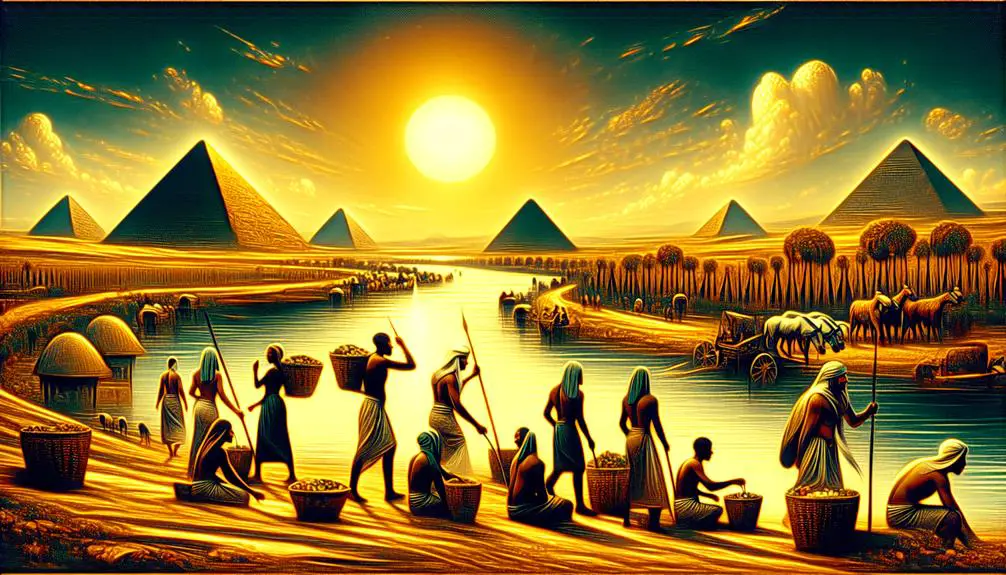
Mizraim in the Bible
Have you ever considered the possibility that Mizraim, mentioned in the Bible, isn't just a historical figure but a symbol of an entire civilization?
As you explore the origins of Mizraim in Genesis, you'll see how this character is intricately linked to the narrative of the Exodus, the ruling dynasties, and the pharaohs of ancient times. The mention of Mizraim opens up discussions on prophetic references, cultural impacts, and even provides archaeological insights.
But to truly understand the significance of Mizraim, you'll need to look beyond the surface and question what lies at the heart of these biblical passages.
Key Takeaways
- Mizraim symbolizes ancient Egypt, playing a pivotal role in the Exodus narrative within the Bible.
- As a descendant of Ham and Noah, Mizraim's lineage holds significant biblical importance.
- Archaeological evidence corroborates the biblical references to Mizraim, enriching our understanding of ancient Egyptian society.
- Prophetic and symbolic references to Mizraim underscore themes of oppression, judgment, and eventual deliverance in biblical teachings.
The Origins of Mizraim
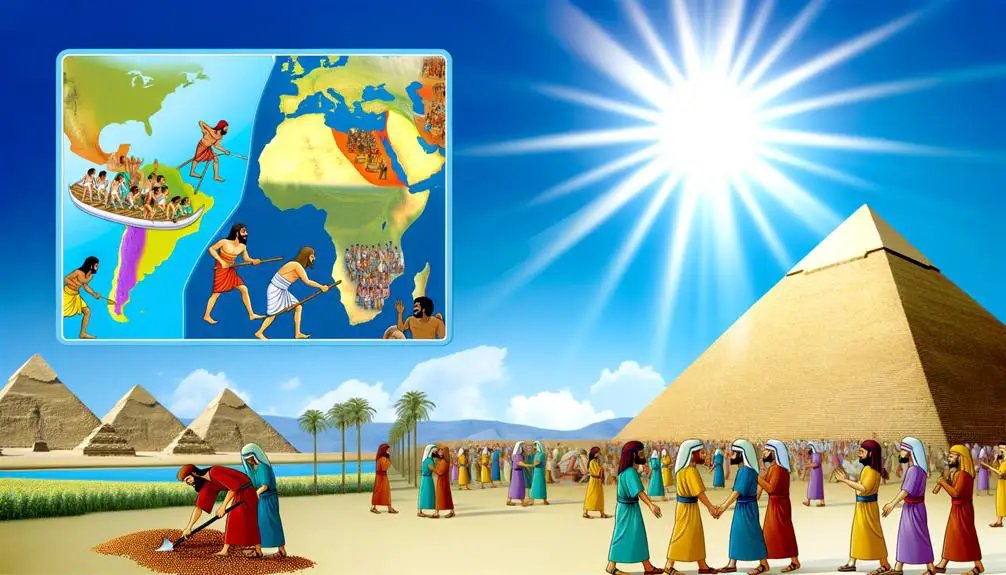
In exploring the origins of Mizraim, one delves into the complex tapestry of biblical lineage, where Mizraim emerges as a seminal figure representing ancient Egypt. This exploration isn't just about tracing a name back through time; it's about understanding the confluence of geography, culture, and language that this name encapsulates. Mizraim, as a term, is deeply tied to the geographical location and linguistic origins that define ancient Egypt within the biblical context.
The geographical location of Mizraim is straightforward yet profound. It refers to the land of Egypt, a cradle of ancient civilization nestled in the northeastern corner of Africa, bordered by the Mediterranean Sea to the north and the Red Sea to the east. This region's significance in biblical narratives can't be overstated, serving not only as a backdrop for pivotal events but also as a cultural and political powerhouse that interacted with neighboring territories.
Linguistic origins of the name Mizraim reveal its intrinsic connection to the ancient world. The term itself is rooted in Semitic languages, wherein 'Mizraim' is thought to be the dual form of 'Mizr,' reflecting the dichotomy of Upper and Lower Egypt. This linguistic nuance underscores the ancient Egyptians' view of their world, divided yet unified under a pharaonic rule. It's a testament to the depth of cultural integration within the biblical narrative, where names carry weight beyond mere identification, encapsulating the essence of the entities they represent.
Understanding Mizraim entails more than recognizing a name in ancient texts; it's about appreciating its multifaceted role in bridging geographical realities with linguistic heritage, offering insights into the ancient Near East's complex socio-political landscape.
Mizraim in Genesis
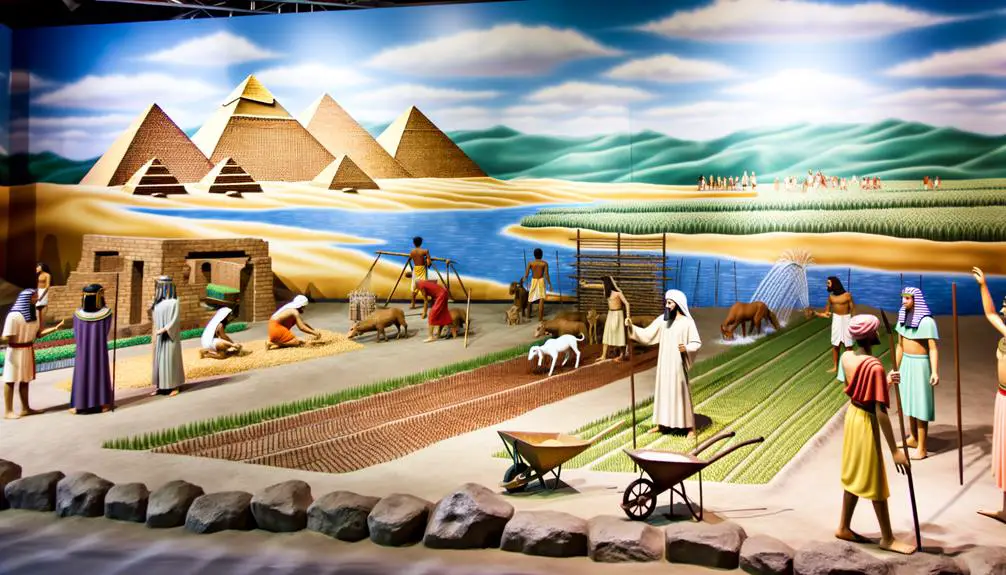
Building on the understanding of Mizraim's origins, the text of Genesis offers a nuanced portrayal of this figure's role within the broader narratives of early biblical history. Genesis situates Mizraim squarely within a complex web of genealogical implications, presenting him as a son of Ham, thereby tracing his lineage to Noah. This genealogical positioning isn't merely a matter of record but serves to establish a foundational relationship between Mizraim and the broader ethnographic landscape of the ancient Near East as perceived by the biblical authors.
The geographic location attributed to Mizraim is equally significant, with the term often equated with Egypt in biblical scholarship. This identification is critical for understanding the context in which the Genesis narratives are situated. Mizraim's association with Egypt provides a backdrop for numerous events and themes that unfold in the Genesis text, including notions of fertility, civilization, and the complexities of international relations in the ancient world. The geographic specificity attached to Mizraim serves as a linchpin for these narratives, anchoring them in a real-world setting that would have been familiar to the text's original audience.
Moreover, the depiction of Mizraim in Genesis isn't static. It evolves in conjunction with the patriarchal narratives, where the interactions between the descendants of Mizraim (the Egyptians) and the patriarchal figures underscore the dynamic interplay between kinship, covenant, and the unfolding of God's plan for humanity. Thus, the portrayal of Mizraim in Genesis is imbued with layers of meaning, reflecting both genealogical and geographic considerations that are central to the text's theological and historical discourses.
The Exodus Connection
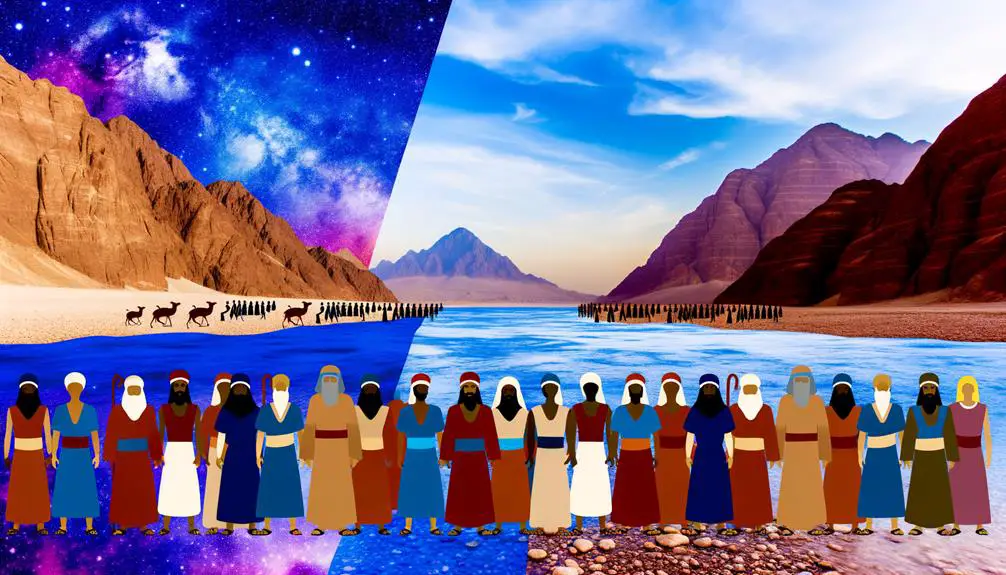
As you explore the Exodus narrative, you'll find that Mizraim plays a pivotal role, not only as the geographical backdrop but also as a key player in the theological and historical events that unfold.
The account of the plagues and the hardening of Pharaoh's heart highlight the complex interplay between divine will and human obstinacy within this context.
Furthermore, the Israelites' departure from Mizraim marks a critical juncture in their collective identity, underscoring the significance of liberation and covenant in the shaping of their destiny.
Mizraim's Role in Exodus
Mizraim, often identified with ancient Egypt in biblical texts, plays a pivotal role in the narrative of the Exodus, shaping the Israelites' journey from bondage to liberation. Under Moses' leadership, the Israelites escape the clutches of Egyptian slavery, marking a foundational moment in their collective memory.
The Red Sea crossing stands as a miraculous event, further emphasizing Mizraim's integral part in this liberation story.
- Moses' Leadership: Central to navigating the Israelites' escape and negotiating with the Pharaoh.
- Red Sea Crossing: Symbolizes the definitive break from Egyptian bondage, facilitated by divine intervention.
- Ancient Egypt's Setting: Provides the backdrop against which the drama of Exodus unfolds, highlighting the struggle and eventual triumph of the Israelites.
In this context, Mizraim's role is multifaceted, serving as both antagonist and catalyst in the Exodus narrative.
Plagues and Pharaoh's Heart
The ten plagues, sent as divine retribution against Pharaoh's refusal to release the Israelites, stand as a testament to the struggle between divine will and human obstinacy in the Exodus narrative. These divine interventions serve not only as punitive measures but also as demonstrations of power meant to undermine the Egyptian gods, directly challenging Pharaoh's authority and divine status.
The heart hardening of Pharaoh, an aspect often scrutinized, underscores a complex interplay of divine sovereignty and human free will. This phenomenon, wherein Pharaoh's resolve against releasing the Israelites intensifies, illustrates a pivotal theme: the consequences of defying divine commands.
Analyzing the hardening reveals a layered narrative, where divine justice and mercy are in constant dialogue, shaping the course of human history through profound acts of intervention.
Israelites' Journey From Mizraim
Following the plagues and Pharaoh's eventual capitulation, the Israelites embarked on their monumental exodus from Mizraim, marking a seminal moment in their collective journey towards divine promise and self-identity. This exodus wasn't merely a geographical shift but a transformative experience, punctuated by:
- Desert wanderings that tested their faith and resilience.
- Covenant renewal, where they reaffirmed their commitment to divine laws.
- Providential encounters that shaped their communal ethos and theological outlook.
These elements underscore the Exodus as a complex narrative of liberation, identity formation, and divine-human interaction.
The journey from Mizraim, therefore, stands as a pivotal chapter in the Israelites' history, inviting a deeper understanding of their enduring legacy and the intricate relationship between faith, community, and place.
Dynasties and Pharaohs
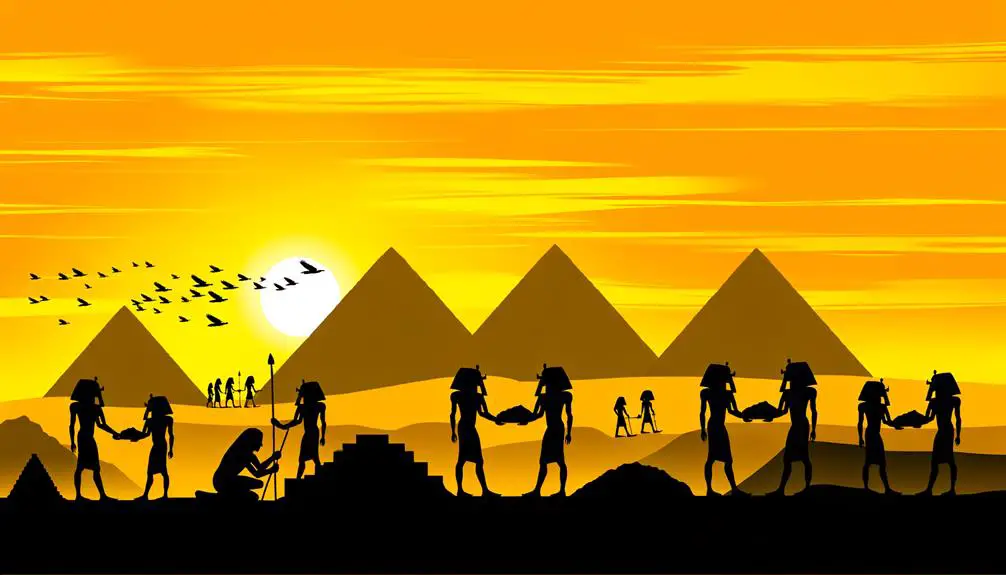
Exploring the intricate lineage of dynasties and pharaohs originating from Mizraim reveals a complex tapestry of leadership and governance that shaped ancient Egyptian civilization. The concept of Pharaoh's lineage and Dynastic succession is pivotal in understanding the historical and cultural evolution of Egypt. Each dynasty, a series of rulers sharing a common origin or bloodline, contributed uniquely to the civilization's development, from monumental architecture to advancements in science and art.
You'll find that the pharaohs, considered divine by their subjects, weren't just political leaders but also religious figureheads, embodying the gods' will on earth. This dual role facilitated a centralized form of governance that allowed for significant architectural, economic, and cultural advancements. The succession from one pharaoh to another wasn't merely a transfer of power; it was a carefully orchestrated event aimed at ensuring the continuity of divine favor and stability across the land.
The dynastic periods, often marked by remarkable achievements and sometimes by significant turmoil, reflect the dynamic nature of Egyptian society and politics. Intrigues, marriages within the royal family, and military conquests played significant roles in the dynastic succession, shaping the narrative of Egypt's history.
Analyzing the dynasties and pharaohs gives you a window into the complexities of ancient Egyptian governance, demonstrating how power dynamics, religious beliefs, and familial ties influenced the course of history. It's a testament to the enduring legacy of Mizraim's descendants, who established one of the most fascinating and enduring civilizations in human history.
Prophetic References
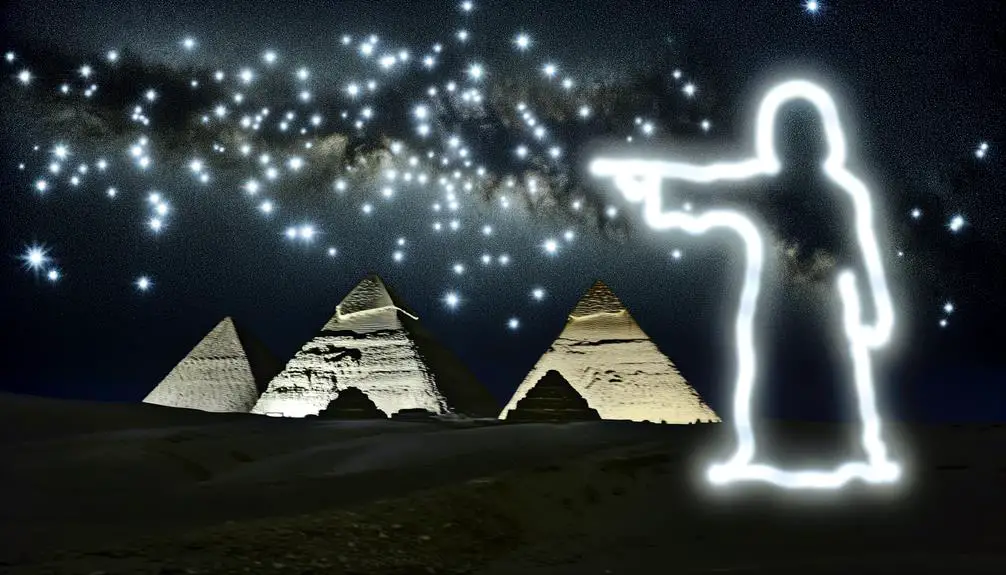
Delving into the biblical narrative, you'll uncover that Mizraim's mention isn't merely historical but deeply prophetic, revealing layers of meaning that have influenced theological interpretations and scholarly debates for centuries. When you explore the prophecies, it becomes evident that Mizraim, often synonymous with Egypt in the Bible, serves as a rich tapestry of end time allegories and apocalyptic symbols, each carrying profound implications for understanding biblical prophecy.
The prophetic references to Mizraim can be categorized into several themes, each contributing to a more nuanced view of biblical eschatology:
- Symbolism of Oppression and Deliverance: Mizraim is frequently depicted as a symbol of oppression, paralleling the end times when the forces of evil will be overcome by divine intervention. This motif resonates with the Exodus narrative, projecting a future hope for ultimate deliverance.
- Harbinger of Judgments: Prophecies often cite Mizraim as the recipient of divine judgments, serving as a cautionary tale for the nations. These judgments are emblematic of the wider apocalyptic symbols of retribution that will characterize the end times.
- Transformation into a Blessing: In a profound turn of events, some prophecies envision Mizraim transformed from a place of bondage to a source of blessing, symbolizing the restoration and reconciliation that will occur in the end times.
Analyzing these prophetic references, you'll appreciate how Mizraim transcends its historical context to embody themes of oppression, judgment, and eventual redemption. These insights not only enrich your understanding of biblical prophecy but also highlight the intricate way in which the past, present, and future are interwoven within the scriptural narrative, making Mizraim a pivotal figure in both historical recounting and eschatological expectation.
Cultural and Religious Impact
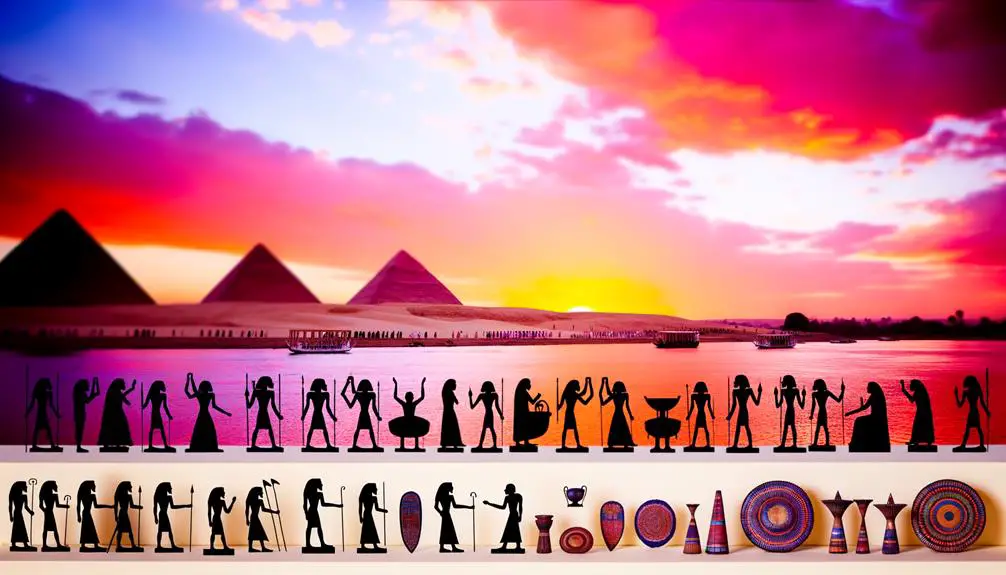
Building on the understanding of Mizraim's prophetic significance, it's crucial to examine its profound cultural and religious impact throughout history. Mizraim's geography, essentially representing ancient Egypt, has played a pivotal role in shaping the cultural and religious landscapes of the Near East and beyond. The fertile Nile Delta, referred to in historical texts as part of Mizraim, enabled the development of one of the world's earliest and most influential civilizations. This civilization's advancements in writing, architecture, and religious thought have left indelible marks on subsequent cultures and belief systems.
You'll find that Mizraim's religious innovations, particularly the complex pantheon of gods and intricate beliefs about the afterlife, have influenced Judaic, Christian, and Islamic theology in profound ways. Concepts of judgment and the afterlife found in ancient Egyptian religion bear striking contemporary parallels to these later monotheistic religions. Moreover, the story of the Exodus, central to Jewish, Christian, and Islamic tradition, is deeply intertwined with Mizraim's geography and its Pharaonic leadership, highlighting the interconnectivity of culture and religion.
The influence of Mizraim extends beyond the religious sphere into cultural practices, including art, literature, and governance. The legal and administrative systems of ancient Egypt, for instance, provided a model for later civilizations in the region. Contemporary parallels can be drawn with modern legal and administrative systems that, albeit evolved, still reflect the influence of ancient practices.
In essence, the cultural and religious impact of Mizraim is a testament to the interconnectedness of human civilization. Its legacy is a reminder of how ancient innovations in thought, governance, and spirituality continue to shape contemporary societies.
Archaeological Insights
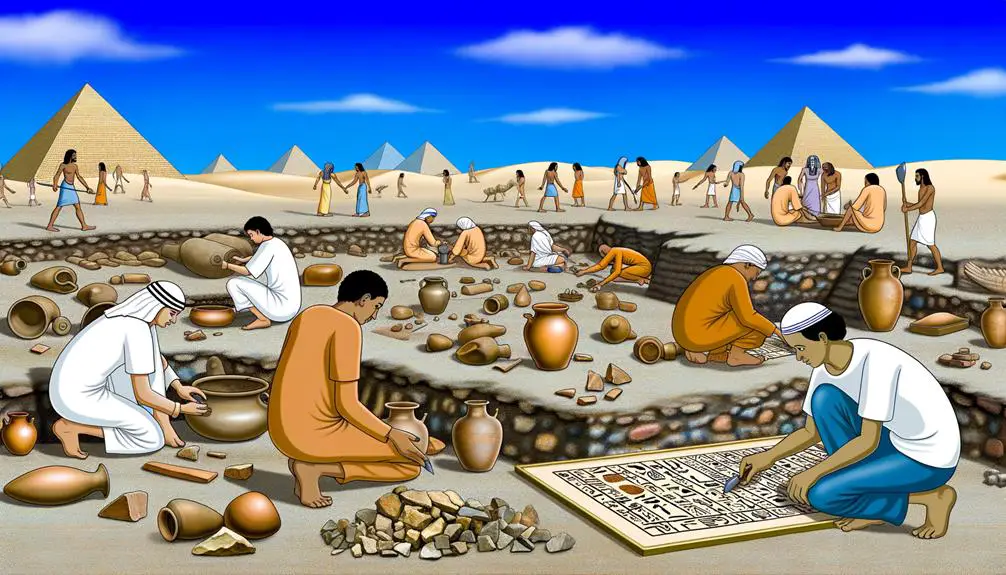
You'll find that archaeological findings play a crucial role in understanding ancient Mizraim, shedding light on its society through unearthed artifacts and inscriptions. These remnants offer tangible evidence that helps interpret the biblical references to Mizraim in a historical context.
Analyzing these discoveries, scholars can trace the evolution of Mizraim's cultural and religious identity over millennia.
Discovering Ancient Mizraim
Exploring the remnants of ancient Mizraim offers invaluable insights into its complex society and cultural heritage. The term 'Mizraim' holds a significant etymology, intricately tied to the ancient world's understanding of geography and identity. Its geographic location, corresponding to modern-day Egypt, was a cradle of civilization, rich in culture and innovation.
Key aspects to consider include:
- Mizraim etymology: Understanding the origin and evolution of the name sheds light on ancient perceptions and linguistic connections.
- Geographic location: This factor greatly influenced Mizraim's development, from agriculture to trade routes.
- Societal structure: Examining the societal makeup provides a glimpse into the daily lives and governance of its people, laying a foundation for further exploration beyond mere artifacts and inscriptions.
Artifacts and Inscriptions Unveiled
Mizraim's legacy, revealed through its artifacts and inscriptions, offers profound insights into its ancient civilization's beliefs, practices, and societal dynamics. You'll discover that the meticulous depiction on artifacts and the precise hieroglyphs on inscriptions unravel the intricacies of Nile agriculture and desert trade, pillars of Mizraim's economy.
Artifact/Inscription |
Significance |
Connection to Mizraim |
|---|---|---|
Pottery Shards |
Evidence of Nile agriculture |
Daily Life |
Hieroglyphic Tablets |
Recorded desert trade routes |
Economy |
Statuettes |
Depiction of deities and rituals |
Beliefs |
Architectural Relics |
Insights into societal organization |
Infrastructure |
Analyzing these finds, you grasp the sophistication of their agricultural strategies and the extensive networks established for desert trade. Each piece, whether grand or minute, acts as a puzzle piece to understanding the depth of Mizraim's cultural and economic achievements.
Frequently Asked Questions
How Has the Interpretation of Mizraim's Identity Evolved in Modern Biblical Scholarship?
In modern biblical scholarship, the interpretation of Mizraim's identity has significantly evolved. Scholars have delved into its genealogical significance and scrutinized archaeological evidence to uncover its historical backdrop. This approach has shifted the understanding from a mere name in ancient texts to a complex figure intertwined with the cultural and historical narratives of the time.
You're witnessing a scholarly endeavor that enriches our comprehension of ancient civilizations and their interconnectedness.
Are There Any Significant Differences in How Mizraim Is Portrayed in Jewish, Christian, and Islamic Traditions?
Yes, you'll find differences in how Mizraim's portrayed across Jewish, Christian, and Islamic traditions. Mizraim's etymology points to Egypt, offering rich geographic correlations that each tradition interprets uniquely.
Jewish texts often detail Mizraim as a founding figure of Egypt, while Christian interpretations might emphasize prophetic narratives.
Islamic traditions also recognize Mizraim's connection to Egypt but may weave it into broader historical or theological contexts, showcasing diverse scholarly perspectives on this ancient figure.
What Role Does Mizraim Play in Contemporary Religious Practices or Beliefs?
In your exploration of contemporary religious practices, you'll find Mizraim's artifacts embody layers of ritual significance. These relics, steeped in history, serve as conduits connecting the faithful to their spiritual heritage.
They're not just historical items; they're vibrant symbols of faith, embodying beliefs and traditions that have transcended generations. Analyzing these artifacts reveals a rich tapestry of belief, where each piece holds a pivotal role in shaping and sustaining spiritual identity today.
How Do Fictional Depictions of Mizraim in Literature and Media Compare to His Biblical Portrayal?
When you explore fictional depictions of Mizraim, you'll find they often diverge significantly from the original narratives. Ancient mythologies and cultural adaptations have a way of reshaping stories, introducing elements that cater to contemporary tastes or moral lessons.
These versions might emphasize certain characteristics or events that the biblical portrayal does not, leading to a richer, albeit sometimes less accurate, tapestry of Mizraim's legacy in literature and media.
Has the Concept of Mizraim Influenced Any Modern Geopolitical or National Identities?
You're exploring how the concept of Mizraim has shaped modern identities, focusing on its etymology and instances of cultural appropriations.
Mizraim's etymology traces back to a name for ancient Egypt, influencing national identities in the region. This legacy is evident in cultural narratives, where Mizraim symbolizes historical depth and complexity.
Yet, cultural appropriations often oversimplify or misrepresent this rich heritage, impacting how these identities are perceived and understood globally.
Conclusion
As you've journeyed through the enigmatic history of Mizraim, you've traversed ancient texts and unearthed connections to Genesis, the Exodus, and beyond.
The dynasties and pharaohs mentioned haven't only shaped history but also woven a rich tapestry of cultural and religious evolution.
Yet, what lies beneath the surface—uncovered through archaeological endeavors—promises to challenge and perhaps even redefine our understanding.
The tale of Mizraim, it seems, is far from over. What secrets still await discovery? Only time will tell.


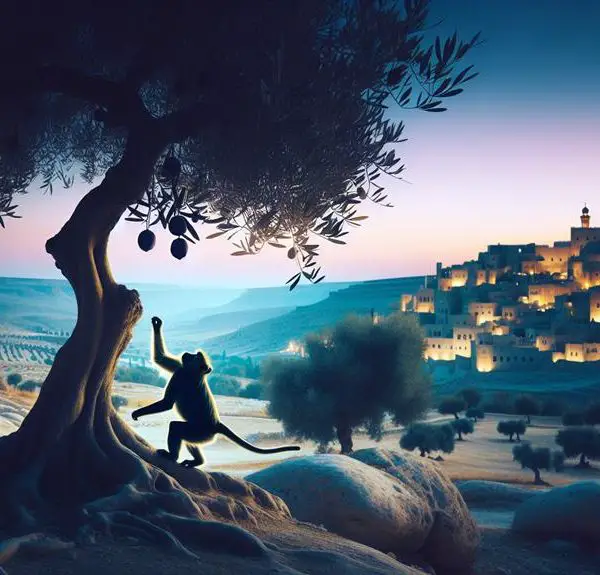
Sign up